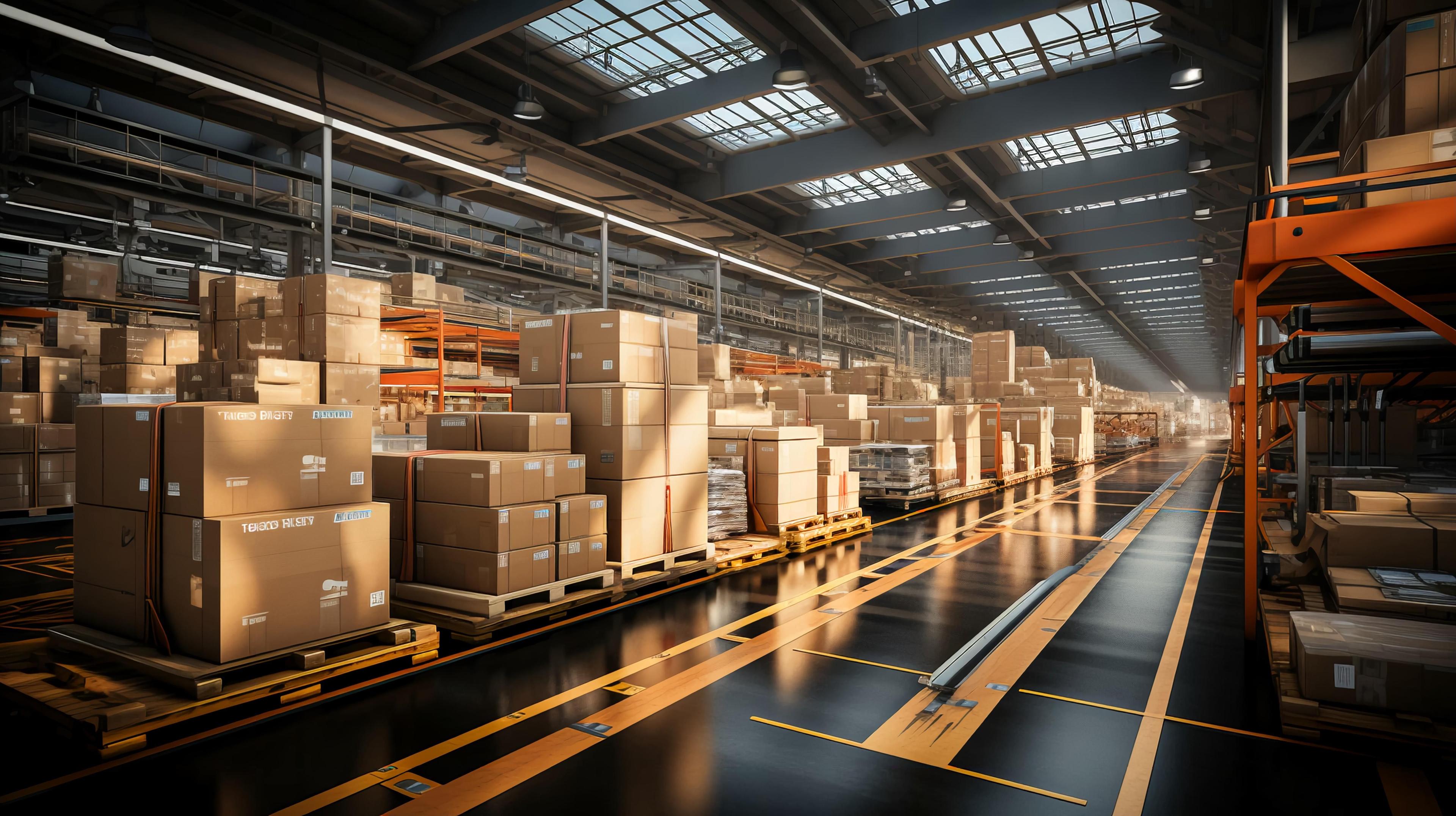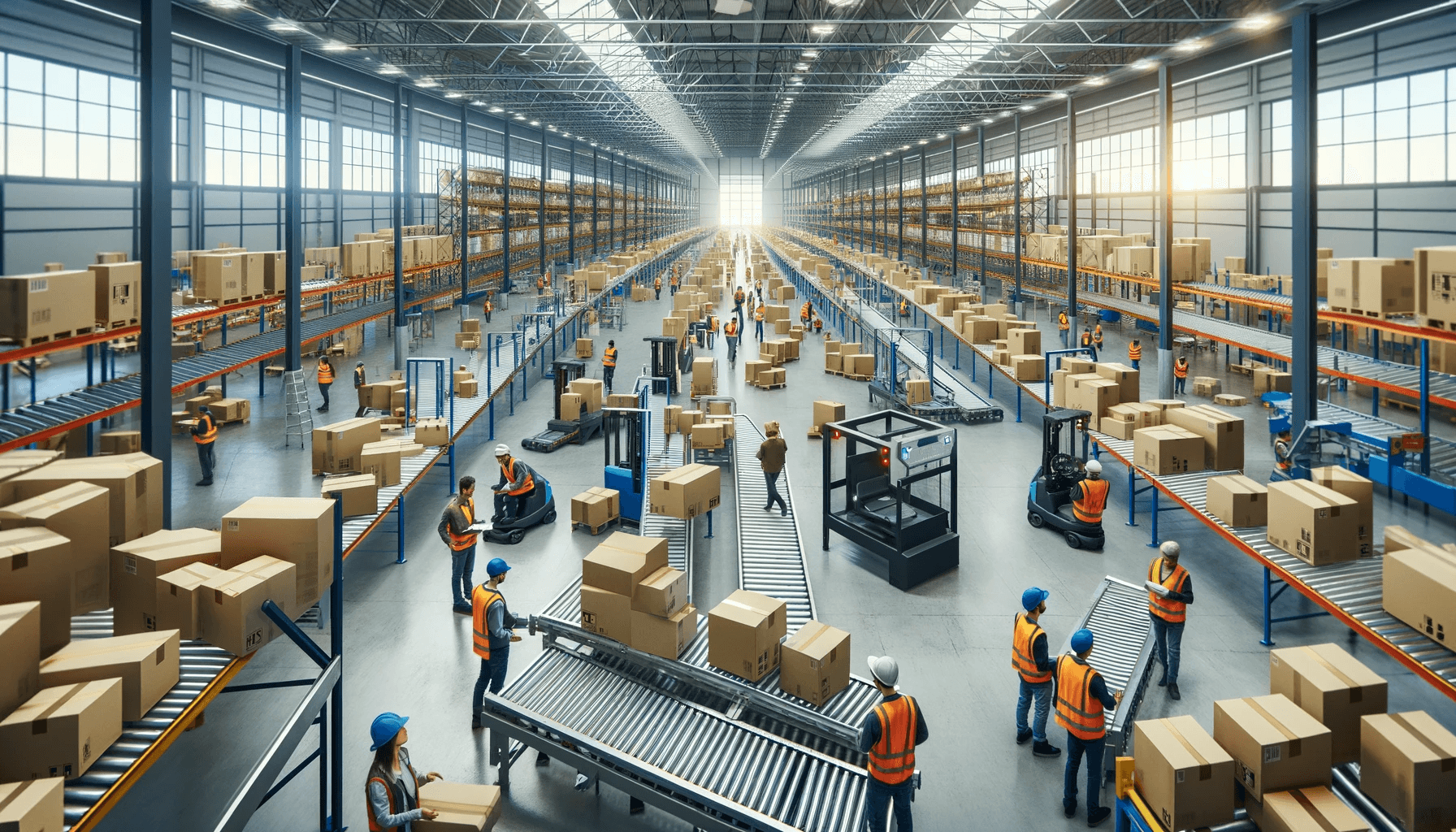
IoT for Business Value: Enhancing Operations Across Sectors
Allow me to guide you through business value, fleet management, and the IoT's impact in industry solutions - A Series
Published Jan 30, 2024
I believe that IoT devices are groundbreakers. Here's why:
During one of my previous work assignments, I visited a distribution center of a leading retailer in the Nordics. There, I witnessed a complex but amazing workflow. Packages flew from suppliers to different big storage halls and eventually to delivery companies all the time and everyone knew what to do. However, a notable absence was the use of IoT to take this flow to the next level.

The distribution center had routines and it helped operators well, things like automated sorting robots and detailed processes. However, the most pressing issue, in my opinion, was the lack of real-time tracking for packages. This led to uncertainty regarding the packages exact locations within the large storage halls, potentially resulting in delays, and maybe misplaced items, which can lead to customer dissatisfaction down the line.
This challenge isn't unique to the retail sector; a similar situation can be observed in other industries. For an ice cream manufacturing plant, where maintaining the cold chain was a challenge as it led to 20% spoilage. I could've bought that instead :)
This is actually why I'm writing this series (not for the ice cream that I would've bought but rather the need for more IoT solutions across industries), we know that IoT offers great opportunities. Not only in efficiency, cost savings, and improved customer experiences but also, businesses can gain real-time insights and when the IoT data is analyzed it leads to informed decision-making which can bring value to previously-uncharted areas,
I'll provide some potential IoT Solutions and Improvements to different industries but also I want to provide you, the reader, some value by easing your journey into IoT. Let's dig into some solutions:

One of the first things that pop to mind is implementing IoT-enabled sensors and asset tracking systems. It is the most needed one, as distribution centers can get real-time data on package locations throughout the distribution process. IoT sensors and devices provide the amount of data needed to analyze, and gain insight, when combined with ML/AI we'd be able to predict changes/issues in asset tracking before they even happen. IoT-enabled devices, like smart trollies, delivery trucks, or shipping containers, can interact with AWS IoT Core, which connects to even more AWS services like storage, messaging, and location services.
Having Real-Time Asset Tracking with predictive analytics is a game-changer! Now tell me, how could this not enhance efficiency, improve logistics, and add significant business value? :)
Let's look into how such a solution can be implemented with IoT rules such as location actions in these steps:
- IoT-enabled devices transmit geospatial data (latitude and longitude for our needs) to AWS IoT Core via MQTT protocol, providing accurate asset location information.
- AWS IoT Core processes these messages using the Rules Engine.
- A "location action" function can be triggered, connecting to an Amazon Location Service tracker resource.
- Tracker resources can interact with Amazon Location geofences, triggering events upon entering or exiting geofenced areas.
- Geofence events can be sent to Amazon EventBridge, enabling connections to other services, notifications, storage, or analytics.
Implementing these would make a significant change to the distribution center, or any other applicable place for that matter :)
As you can see it has vast potential in improving operations across various industries.
IoT for Environment and Safety Monitoring:
In the context of distribution centers handling perishable goods, IoT plays a crucial role in environmental monitoring and damage prevention. Things like environmental monitoring & damage prevention as IoT sensors are the most suitable things to track temperature, humidity, and air quality (just to name a few) in real-time. This is crucial for preserving the freshness of perishable goods and preventing spoilage. Additionally, these sensors can alert for damage prevention during storage or transportation by detecting changes in environmental conditions. Early detection of changes allows for immediate action, those actions can be to just alert the personnel or (my favorite which is) remotely and automatically adjusts conditions or maybe even reroute shipments. Doing so would maintain the products' quality and conditions as optimal as possible but also the calculated path or delivery time for the products.
I’d love to hear your thoughts on how important you think environmental and safety monitoring is in your industry. Can IoT contribute to safer and more sustainable operations? How? :)
As we explore the possibilities of IoT, it's important to understand the steps involved in implementing these solutions. Yes, we all know, that in today's fast-paced world, the efficiency and effectiveness of operations are of greatest importance. And IoT is on the rise; distribution centers, for instance, have a huge opportunity to revolutionize their operations. There are many IoT solutions specific to these needs. It is so exciting to see the industries' needs and transform how they function.
Maybe implementing IoT solutions can seem foggy, I can agree on that at first, but with good planning and commitment, it becomes just like any other project. Here are the first steps to consider:
- Selecting IoT Devices: This goes without saying, we do need to research which devices are the right ones for your needs.
- Network Infrastructure: Having the right network infrastructure in place would make things a lot easier, but there also are other solutions that can assist with this domain.
- System Integration: Event-driven integration with existing systems is one of my favorite things. It gives you that joy of having IoT devices in the first place as it is when the data start to flow and you can finally work on analyzing it :)
- Training & Education: Conducting workshops and training sessions is vital for staff efficiency and minimizing system downtime.
- Data Security and Governance: Everything should be built on a secure base, protecting sensitive data and ensuring compliance with regulations has to be a priority.
Now that we've walked through the thought process that you would discuss with the stakeholders, let's have a bonus round for the services that one can use to build the solution:
Starting with the Connectivity we have:
- AWS IoT Greengrass for building, managing, and deploying IoT applications directly at the edge.
- AWS IoT Core: Easiest device management and data analysis (more on this later in this article series)
Of course, working with IoT would generate loads of data, and to analyze and manage it you can use:
- AWS IoT Analytics: AWS IoT Analytics facilitates the analysis of large volumes of IoT data. It removes the need for a separate analytics platform, convenient right?
- Amazon QuickSight: Always great to be able to provide business intelligence.
Security is the backbone of all our solutions, and for IoT, we can use:
- AWS IoT Device Defender: Continuously audits IoT configurations to secure the fleet of IoT, devices.
- AWS IoT Events: Monitors and responds to events across multiple IoT sensors and applications.
Building a secure IoT infrastructure is non-negotiable. With the right protocols in place, we ensure the protection of sensitive data and adherence to regulations. This sets a foundation of trust and reliability for all IoT solutions.
In wrapping up this "introduction" to IoT's capabilities, it's clear that the interplay of device connectivity, data analytics, and robust security forms the backbone of a successful IoT ecosystem. As we continuously dig through the development of what value IoT can bring, it becomes evident that the potential for industry-wide transformation is not just a possibility but an ongoing reality!
In the next article of this series, we'll dig deeper into AWS IoT Core and IoT fleet management. To ease into the solutions and uncover how we can implement this "an underrated gem" of IoT to create value & streamline our business processes.
Lately I've seen some great solutions that I'd like to dive into, like a security door company using IoT and AI to alert when it detect certain patterns of bumps and openings on the doors. They company had analyzed IoT data and trained models to allow the doors to "react" to forced and abnormal door openings, how cool is that? :)
There is also this known elevator engineering company that has been optimizing its maintenance schedules through IoT. Just like the security door company, they read and analyze IoT data like vibration, heat, and noise (just to name a few) to predict maintenance needs. These solutions are for sure improving business efficiency and customer service, in multiple cities at the same time!
Now, I'm curious about your experiences. How is the IoT need your industry? I'd love to hear from you If you know any creative solutions or challenges :)
Also, feel free to connect with me on LinkedIn. I’m always up for conversations about innovative solutions that create real value for businesses and users alike.
— Saif;
